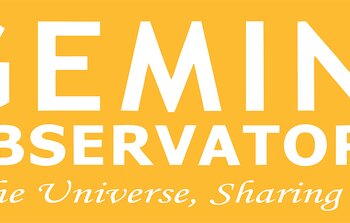Gemini Observatory Receives Funding to Take Mauna Kea Internet Access to New Heights
April 15, 1999

The Gemini Observatory has received $600,000 from the National Science Foundation (NSF) to support a significant expansion of the internet connection speed between its Mauna Kea observatory, its Hilo headquarters in University Park, and the rest of the world. By coordinating the Gemini grant with a similar but different NSF grant recently made to the University of Hawaii's (UH) Information Technology Services, all of the Big Island observatories and UH-Hilo will share in the benefits of this much improved connection.
The improvement is especially important to Gemini since its operations are very dependent upon remote observing and the immediate transfer of data over the Internet. The expansion will allow Gemini to accomplish its goal of connecting astronomers around the world in real time to its Hilo control center and the telescope on Mauna Kea.
UH Hilo will also benefit from the increased network speed in a number of ways. "Aside from increasing faculty and student interactions with the science activities of the observatories, the increased bandwidth will open new doors for things like our distant learning program", commented Dr. Bill Chen, UH Hilo's Director of Distant Learning.
The unique collaboration between Gemini and UH allows the Gemini grant to complement a recent $350,000 NSF grant to UH's Information Technology Services to upgrade its internet facilities, including a data-rate increase for the Mauna Kea observatories from 1.5 to 6 megabits per second. Adding Gemini's funding will permit a further increase to 45 megabits per second and provide enough capacity to meet Mauna Kea's expected requirements for several years. It is anticipated that the upgrades will be complete by late 1999.
The Interim Director of UH's Institute for Astronomy, Dr. Robert McLaren, commented on the significance of this announcement, "With ever larger and more sophisticated cameras and instruments showing up on Mauna Kea telescopes, such as Gemini, the need for increased bandwidth had reached a critical point. In one stroke, this innovative solution has solved Mauna Kea's data rate problems for well into the next decade."
According to Gemini Operations Manager, Dr. Jim Kennedy, "By pooling our efforts and our funding, Gemini and the University of Hawaii together are increasing the Big Island observatories' and UH-Hilo's internet speed by a factor of 30." Dr. David Lassner, director of UH Information Technology Services, said that "This partnership shows what is possible when you combine resources to solve common problems. This would have been prohibitively expensive if we had worked independently."
There are other kinds of educational benefits as well. The increased bandwidth will allow Gemini and the other telescopes to share more of their findings with the public. Gemini outreach efforts on the worldwide web already include a virtual tour of the observatory on Mauna Kea and will expand to include live webcasts to museums, planetaria and classrooms world-wide once scientific operations begin. The Gemini WWW address is www.gemini.edu.
Images and more details on the Gemini Observatory can be found on the observatory's media www site
More Information
The Gemini 8-meter Observatory Project is a multi-national effort that will provide two nearly identical 8-meter telescopes that can explore the entire sky in both optical and infrared light. To accomplish this, one telescope is located on Hawaii's Mauna Kea (Gemini North) and another on Cerro Pachón in northern Chile (Gemini South). It is expected that Gemini North on Mauna Kea will start scientific operations by mid 2000 with Gemini South about a year behind Gemini North. Both telescopes will incorporate new technologies that allow large, relatively thin mirrors to collect and focus starlight, at times with even more clarity than is possible with the Hubble Space Telescope. The $184 Million (US $) project is on schedule and within budget.
The Gemini 8-meter Telescope Project is managed by AURA (Association of Universities for Research in Astronomy, Inc.), a non-profit consortium of 27 US institutions and four international affiliates. Gemini receives major funding from the National Science Foundation (NSF), which acts as the executive agency for the international partnership. The other Gemini partners are the United Kingdom, Canada, Australia, Chile, Brazil and Argentina. Gemini is the highest priority nationally-funded astronomy project in each of the partner countries, and each contributes significant scientific, technical, and financial support.
